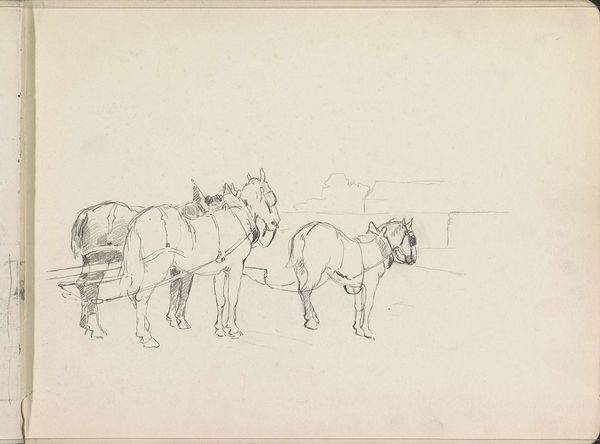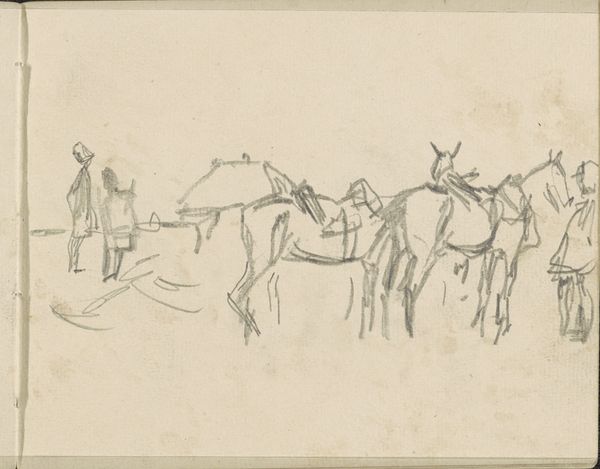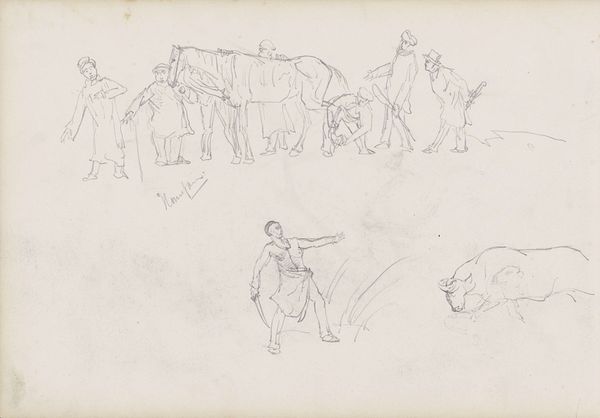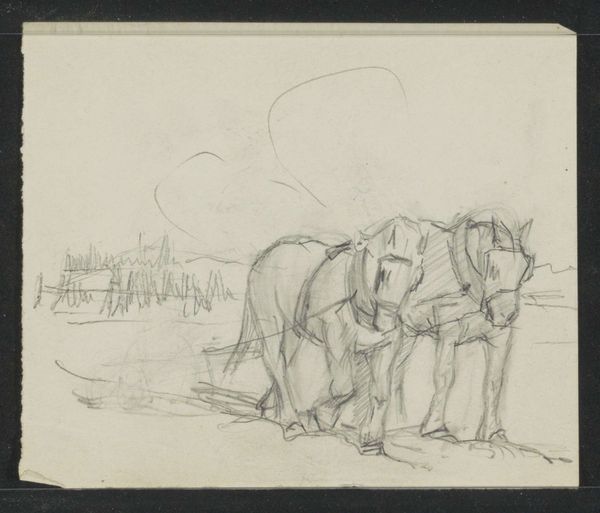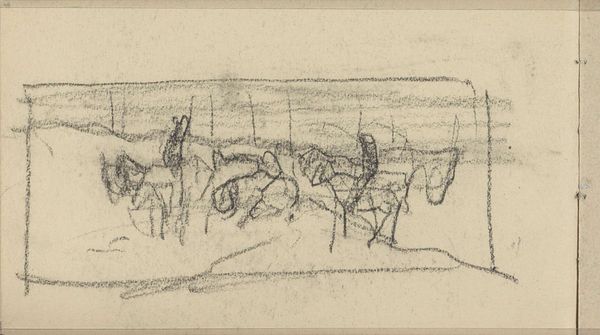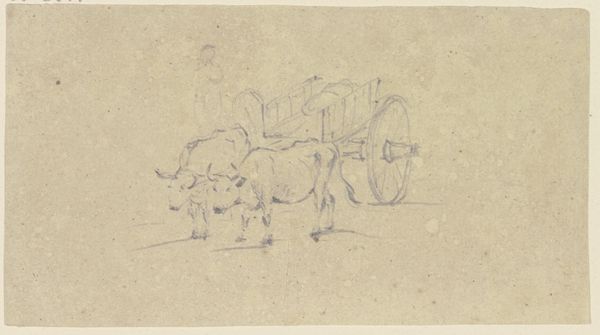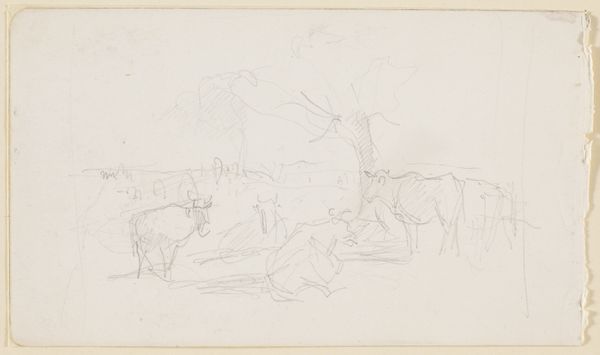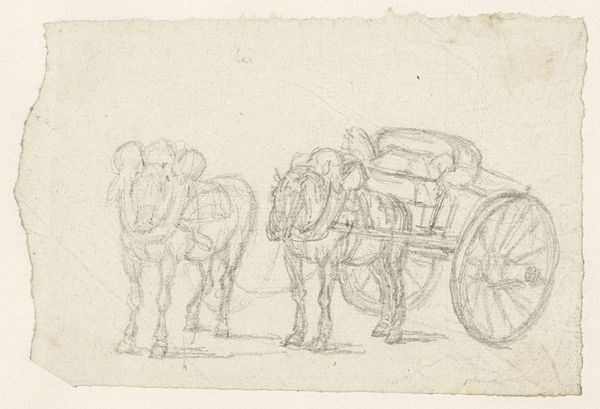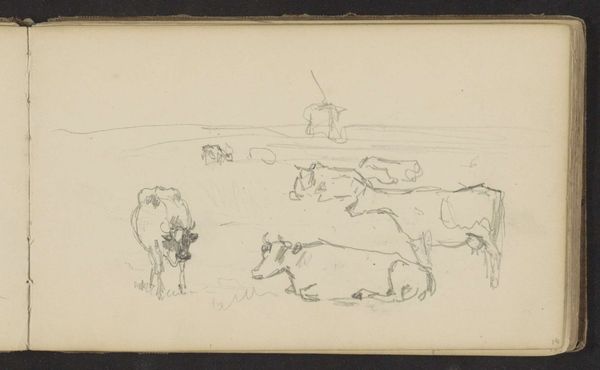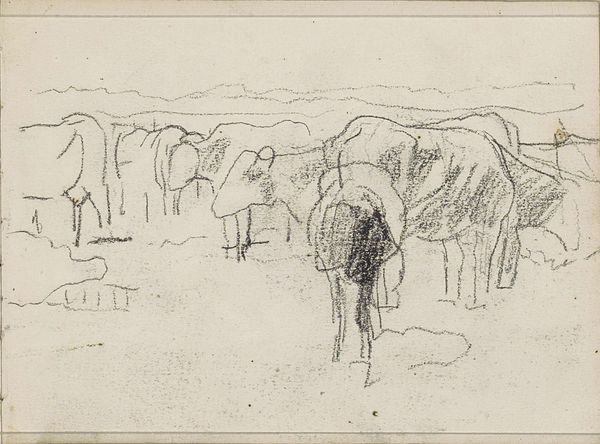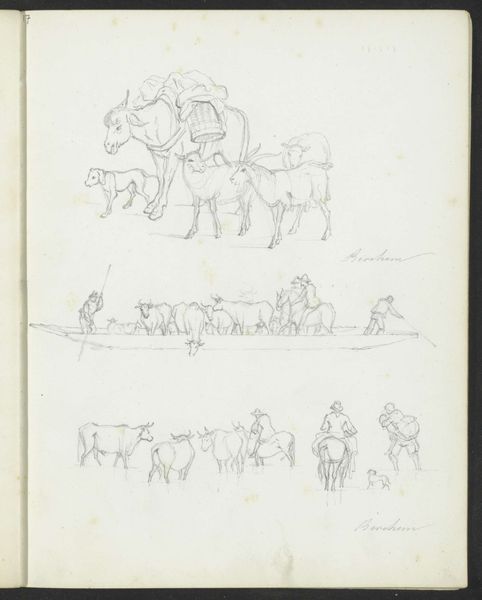
Copyright: Rijks Museum: Open Domain
This sketch by Jozef Israëls, made with graphite on paper, captures a fleeting moment on a street, likely in the Netherlands during the late 19th century. It shows a horse-drawn carriage and several figures, including a woman in a dress, rendered in a quick, impressionistic style. Israëls was a key figure in the Hague School, a group of Dutch artists who emphasized realism and the depiction of everyday life. The sketch format suggests a focus on immediate observation and the capturing of a specific atmosphere. This approach reflects a broader shift in the art world, away from academic idealization toward more direct engagement with the modern, urban environment. The presence of the horse and carriage also speaks to the social structures of the time, when personal transportation was a privilege, reserved for the wealthy classes. By studying the sketchbooks and letters of artists like Israëls, along with period accounts of urban life, we can better understand the changing social dynamics of the 19th century and the role art played in reflecting and shaping those changes.
Comments
No comments
Be the first to comment and join the conversation on the ultimate creative platform.
